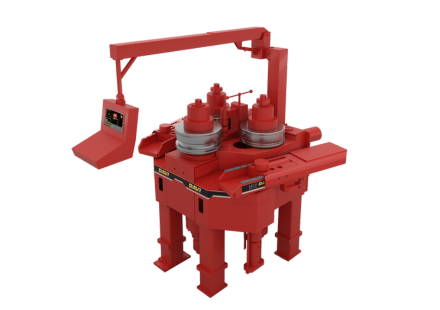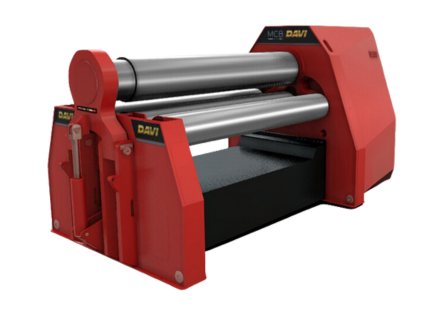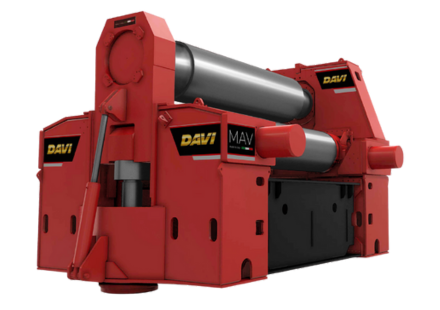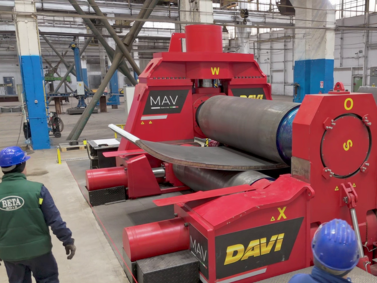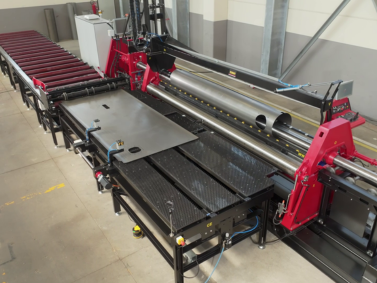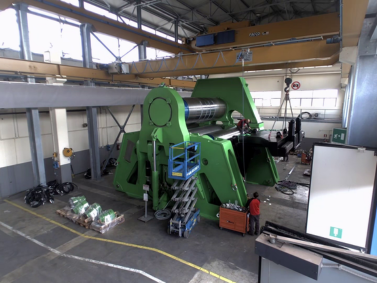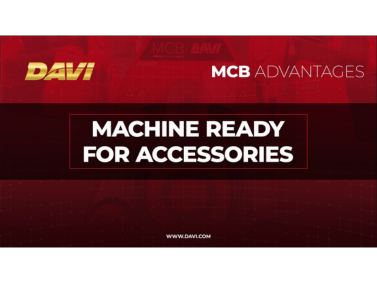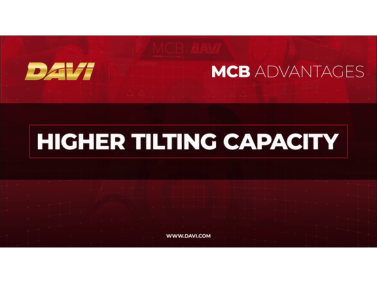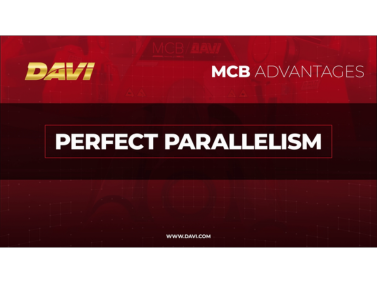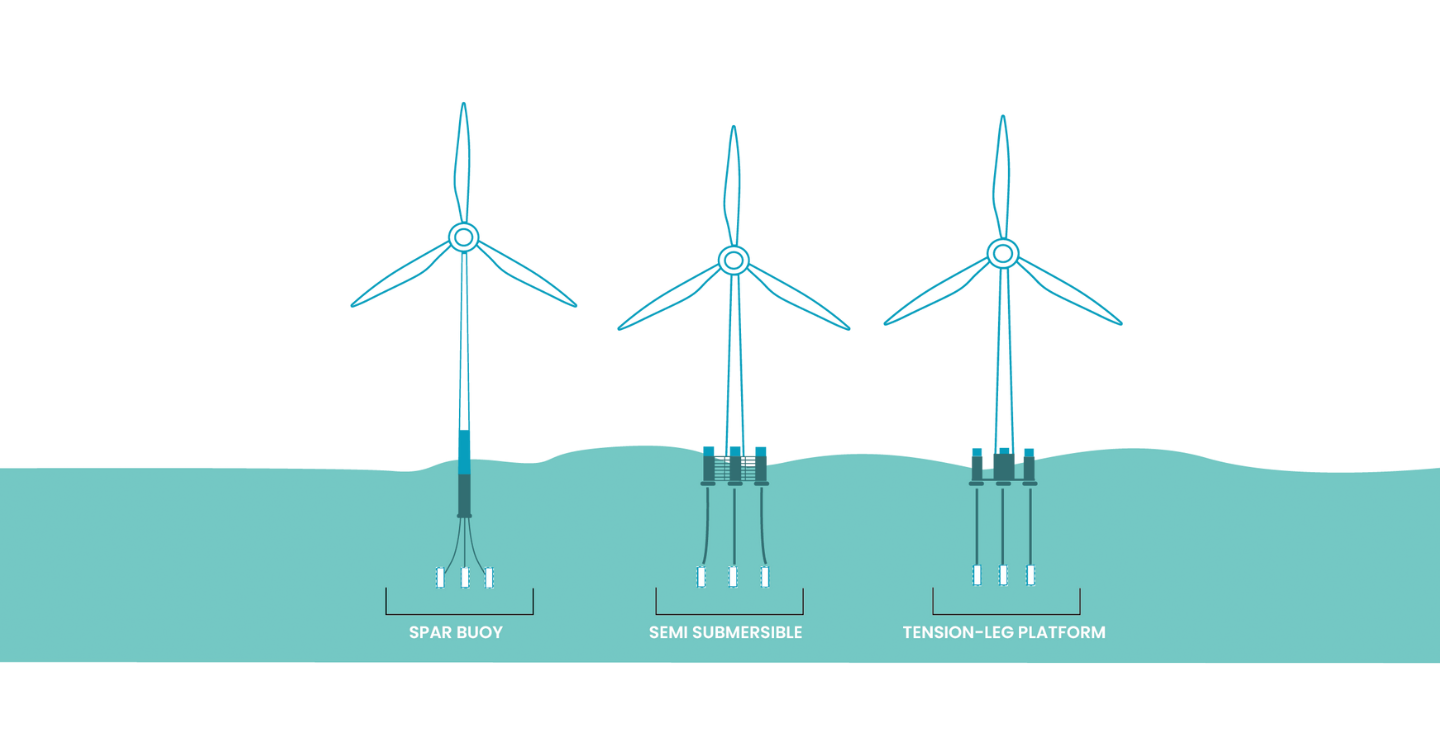
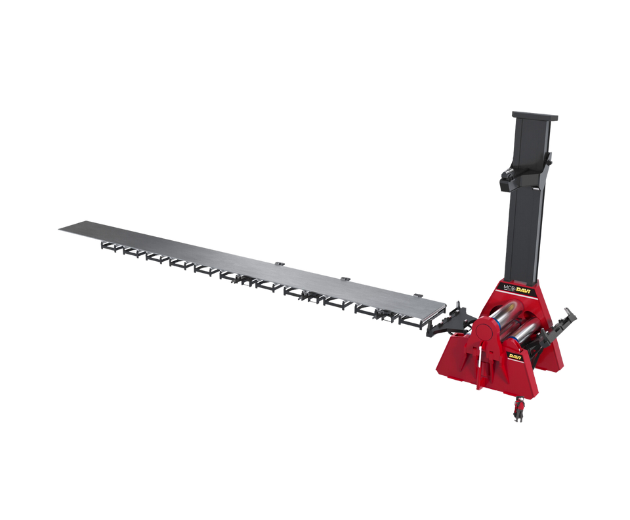




Fabrication of Floating Foundations
The layout for the fabrication of floating foundations can include either standard or vertical Plate Rolls.
The world of offshore wind energy is witnessing a rapid evolution in floating foundation technology, driven by the competition among various providers striving to offer economically viable solutions for the first generation of commercial floating projects. These advancements are vital in unlocking the potential of wind energy in deeper waters, where fixed-bottom foundations are not feasible. Let's explore the main types of floating foundations currently available in the market.
- SEMI-SUBMERSIBLE: Semi-submersible platforms are among the leading contenders in the realm of floating foundations. These platforms are designed to partially submerge in the water, relying on buoyancy to remain afloat. Semi-submersibles offer stability in harsh marine environments and are known for their versatility.
- SPAR-BUOY: Spar-buoy foundations are another innovative solution that has gained recognition in the industry. These structures consist of a vertical cylinder (the spar) that extends below the water surface, with a buoyant section on top. Spar-buoys are known for their stability and the ability to support tall wind turbines. They have proven effective in offshore conditions with significant wave heights.
- TENSION-LEG: Tension-leg platforms provide a unique approach to floating foundations. They are tethered to the seabed with tensioned vertical tendons, ensuring stability. Tension-leg platforms are renowned for their minimal motion in response to waves and are well-suited for locations with challenging environmental conditions.
As the competition in the floating foundation sector intensifies, innovative solutions continue to emerge, addressing cost-efficiency, adaptability, and overall feasibility.
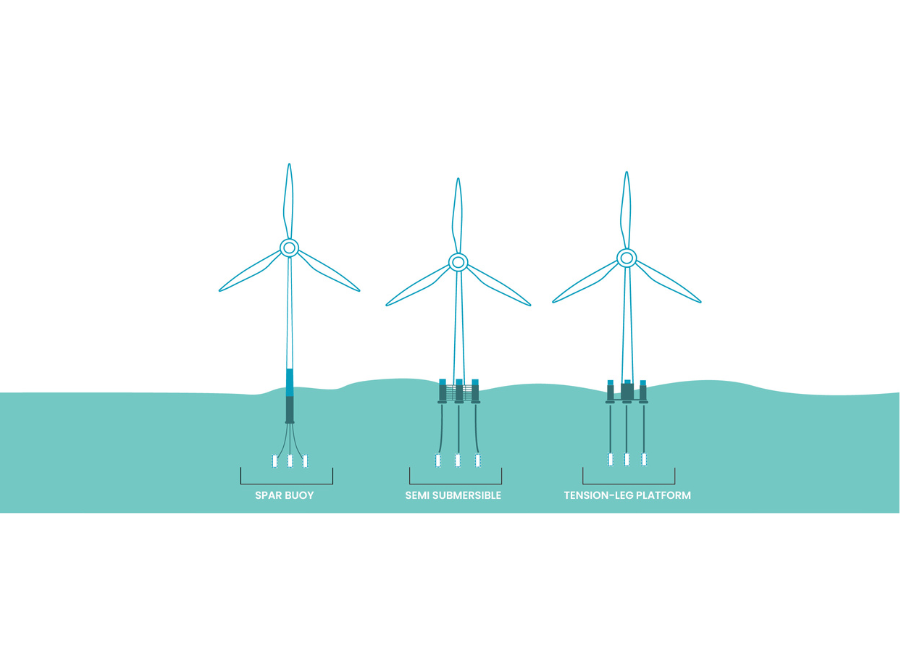



Davi Solutions for Semi-submersible or Tension-leg Foundations
VERTICAL ROLLING
Davi Solutions for Spar-buoy Foundations
HORIZONTAL ROLLING



Other products
MEDIA
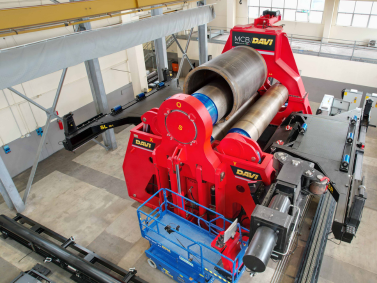
In 2024, Davi solidified its leadership in the wind energy sector by delivering 30 complete rolling solution lines worldwide. These tailored system...


Davi MCP Angle Roll is the top choice of Master Benders. See below some articles and videos about the most relevant Master Benders who chose Dav...

https://www.global-industrie.com/en

